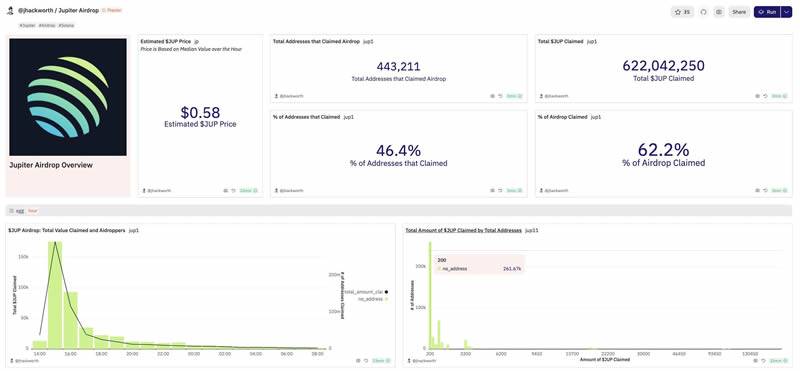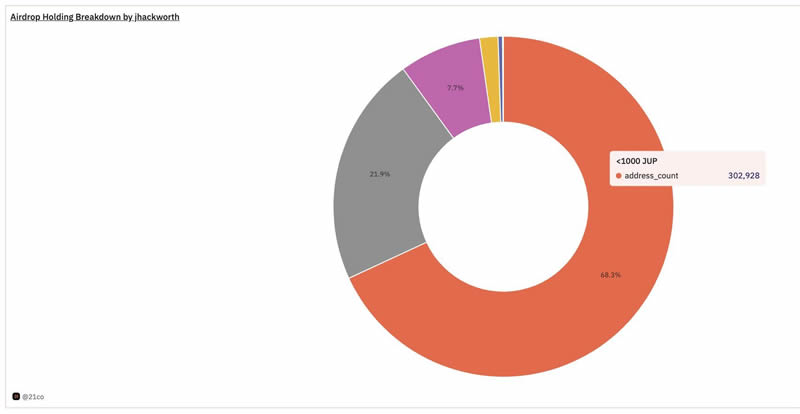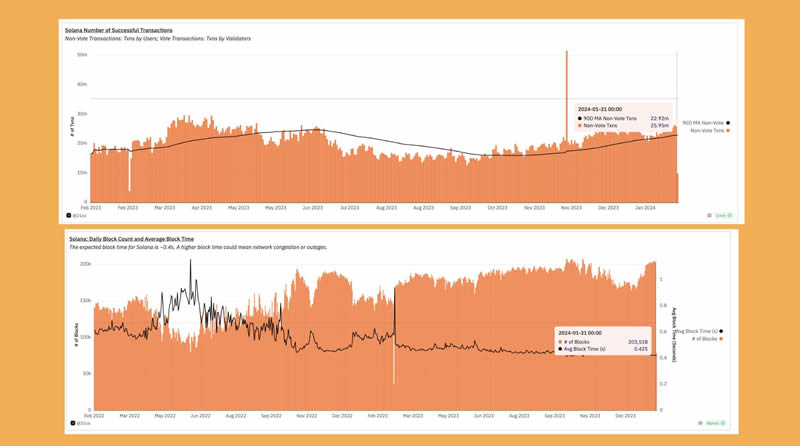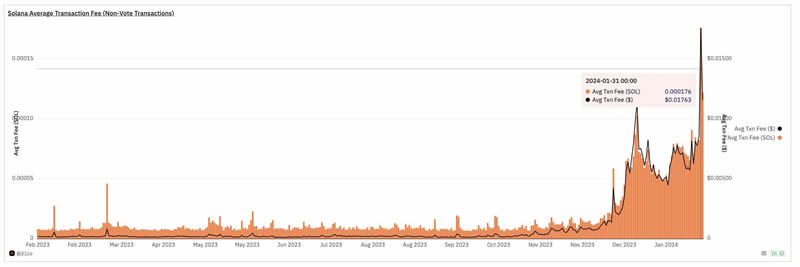Jupiter’s airdrop has attracted much attention recently, triggering extensive discussion and analysis. This article will provide a detailed analysis of this airdrop from the aspects of JUP receipt and data on the Solana chain.
So far, more than 440,000 addresses have received 622 million JUP tokens. However, 54% of wallets that are eligible for air investment are still unclaimed, and approximately 378 million JUPs remain unclaimed.

Most people only received less than 1,000 JUP. 59% of people who airdropped (261,000 wallets) only received 200 JUP, about 1,500 The wallet received 100,000-200,000 JUP.

#Beneficiaries of high-value airdrops often still hold JUP, while 72% of those who received less than 1,000 JUP no longer hold it. The most loyal recipients are wallets that receive 50,000-100,000 JUP. Please note: holders may use it for DeFi activities.

Next, let us analyze the data on Solana.
Currently, the transaction volume processed by Solana has increased by 13% over the past 90 days, and Solana is also able to maintain a block time of close to 400 milliseconds.
While this may seem normal for Solana, more wallets are transacting on the network and competing for faster inclusion.

#On the day of the JUP airdrop, Solana’s active addresses hit a one-year high, and at least 50% of active wallets claimed JUP on the network. As the number of wallets transacting on Solana increases, we expect average transaction fees to increase as well.

Solana’s average transaction fee is 2 times that of the previous day (January 30), but for users, this transaction fee is still very low, each transaction only costs About $0.017.

#Median fees for priority processing surged, but lowest priority fees remained at 0.
This means that, despite competition in transaction inclusion, the network is still able to process normal user transactions paying a 0 priority fee.

Currently, 6,000 SOLs have been burned on the network, worth approximately $600,000.

#Jito validator tip also reached its highest value, receiving 8,370 SOL (worth $837,000) in a single day.
As we have seen across the network, some advanced users are executing complex bundled transactions, which may require more computing units to process.

The above is the detailed content of After the Jupiter currency was issued: 60% of addresses only received 200JUP, and the airdrop effect led to a new high in activity on the chain. For more information, please follow other related articles on the PHP Chinese website!
 Advantages and Disadvantages of Free Overseas Website Servers
Advantages and Disadvantages of Free Overseas Website Servers
 What should I do if the secondary web page cannot be opened?
What should I do if the secondary web page cannot be opened?
 app testing tools
app testing tools
 How to configure default gateway
How to configure default gateway
 what is ed
what is ed
 Website source code
Website source code
 Detailed explanation of java displacement operator
Detailed explanation of java displacement operator
 How to use mysql cursor
How to use mysql cursor
 What does the other party show after being blocked on WeChat?
What does the other party show after being blocked on WeChat?




